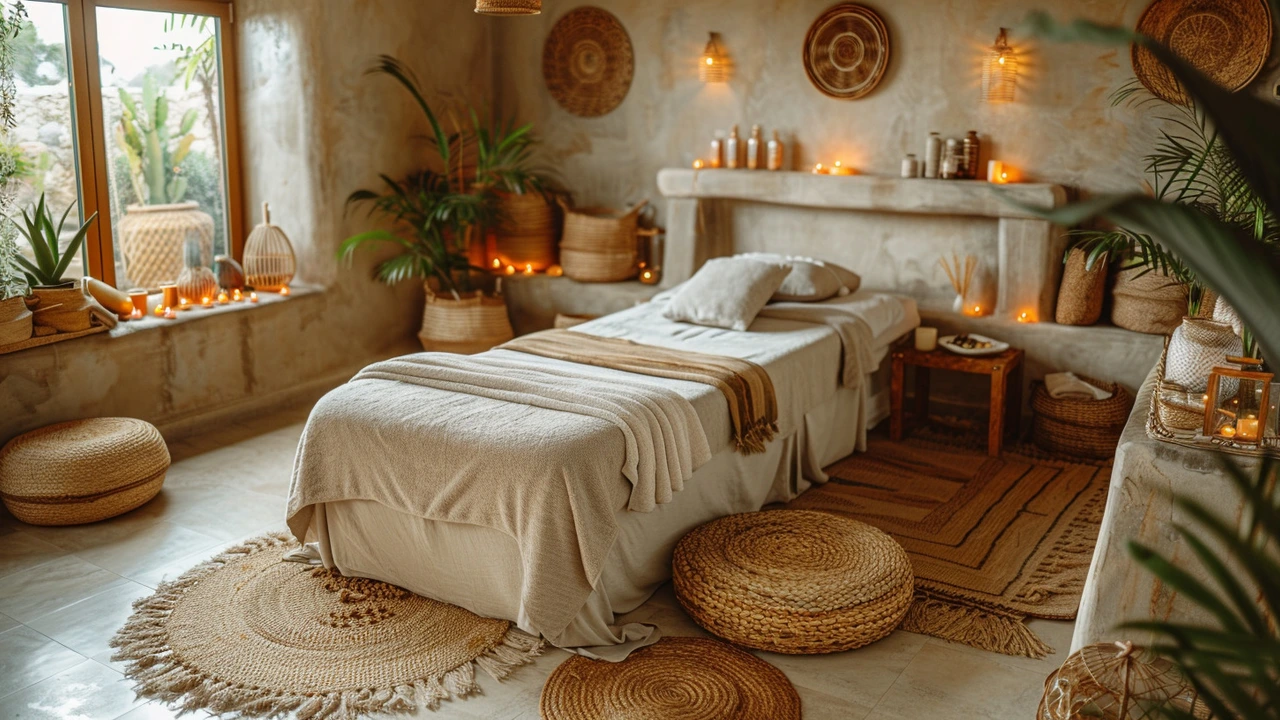In today's fast-paced world, finding ways to relax and unwind is more crucial than ever. One holistic approach that has stood the test of time is the Swedish massage. Known for its gentle yet effective techniques, this form of massage therapy is a popular choice for those looking to ease stress and soothe muscle tension.
Swedish massage isn't just about luxury; it's a method rooted in history and tradition, designed to promote overall well-being. With a combination of strokes and pressure, it helps to release knots and improve circulation, leading to a state of deep relaxation. Whether you're a seasoned spa-goer or a newcomer, the magic of Swedish massage can be a transformative experience for the body and mind.
The Swedish massage, despite its name, has origins that are both fascinating and a bit complex. This popular form of massage therapy was developed in the early 19th century by Pehr Henrik Ling, a Swedish physiologist and fencing master. Ling’s work combined elements of physical therapy known to ancient societies, including the Greeks, who used massage to aid athletes.
Ling’s contributions to massage therapy are well-recognized, yet he didn't actually coin the term 'Swedish massage'. It was later practitioners who adopted it. Ling's main focus was on what he called ‘medical gymnastics,’ which combined massage, movement, and exercises to promote health. Over time, his techniques evolved and adapted into what we now recognize as Swedish massage, emphasizing the use of soft, long kneading strokes, rhythmic tapping, and deep circular motions.
One of Ling’s significant influences was his understanding of human anatomy and physiology. By integrating his knowledge into his techniques, he aimed to enhance the body’s natural healing processes. Interestingly, his methods were initially met with skepticism from the medical community; however, over time, the benefits of his techniques became evident, and they gained acceptance and popularity worldwide.
Swedish massage has since been shaped by other notable figures, including Johan Georg Mezger, a Dutchman often credited with codifying the techniques that now define this type of massage. He introduced terms like effleurage (gliding), petrissage (kneading), tapotement (rhythmic tapping), and friction, which are still used by massage therapists today.
These techniques weren't just about relaxation; they were also aimed at improving circulation, reducing muscle tension, and fostering overall wellness. The integration of mental therapy with physical therapy made Swedish massage a holistic approach to health. It’s this blend of simplicity, effectiveness, and holistic wellness that has allowed Swedish massage to remain popular for centuries.
Despite its growth and evolution, the core principle of Swedish massage remains true to Ling's vision: to aid the body’s natural healing abilities through structured, intentional touch and movement. It’s a testament to how traditional practices can adapt and thrive in the modern world.
"The art of medicine consists in amusing the patient while nature cures the disease." – Voltaire

When it comes to Swedish massage, the techniques are both varied and methodical, designed to cater to different needs of the body. The hallmark of this type of massage lies in its classic strokes, each serving a specific purpose. Effleurage, for instance, involves long, sweeping strokes that follow the natural contours of the body, aimed at warming up the muscles and improving circulation.
If you've ever experienced tension and tightness in your muscles, you'll appreciate the benefits of petrissage. This kneading technique uses the hands, thumbs, and fingers to gently lift and squeeze the muscles, breaking down knots and promoting relaxation. Petrissage is particularly effective for deeper tissues and helps in the overall detoxification of the body.
Tapotement, on the other hand, adds a rhythmic dynamic to the massage. Utilizing light tapping, hacking, or percussion movements, tapotement invigorates the muscles and can help in stimulating nervous responses. Though it might sound intense, the touch is always controlled and tailored to the body's needs, making it surprisingly soothing.
Another essential technique is friction. This stroke is powerful in its simplicity, focusing on small, circular movements that penetrate deeper into the muscle layers. Friction is excellent for working on tight areas, especially those that have been problematic for a long time. It encourages the breakdown of adhesions and improves blood flow to targeted regions.
Lastly, there's the lesser-known but equally important technique of vibration. As the name suggests, this involves trembling movements created by the hands on a particular muscle group. It's a subtle yet profoundly relaxing technique, used often to finish a session on a deeply calming note. The light vibrations help in reducing muscle soreness and encouraging a tranquil state of mind.
“The techniques used in a Swedish massage are fundamental to its success. Each one is tailored to address different muscle groups and issues, ensuring a holistic approach to relaxation and healing,” says renowned massage therapist John Matthews.
It's fascinating how these techniques can interweave to offer a comprehensive therapeutic experience. The combination of effleurage, petrissage, tapotement, friction, and vibration works in harmony, targeting various aspects of muscle health and psychological well-being. Whether you're easing into a state of relaxation or seeking relief from chronic discomfort, these techniques lay the groundwork for a restorative journey.

Swedish massage is renowned for its ability to provide comprehensive body relaxation and numerous health benefits. This popular massage technique focuses on releasing muscle tension and improving blood circulation, which can have a transformative effect on both your physical and mental well-being.
One of the primary benefits of Swedish massage is stress reduction. The gentle, rhythmic strokes used in this technique help calm the nervous system and promote a state of tranquillity. This makes it an excellent choice for people dealing with anxiety, stress, or insomnia. Studies have shown that regular massage therapy can significantly reduce the levels of cortisol, the body's main stress hormone, leaving you feeling refreshed and rejuvenated.
Another significant advantage of Swedish massage is pain relief. Whether you're dealing with chronic pain conditions like arthritis or simply the aches from a tough workout, this type of massage can offer substantial relief. The various techniques used, such as kneading and tapping, help to target sore muscles and alleviate pain by breaking down adhesions and improving flexibility.
Swedish massage also boosts blood circulation, which is essential for overall health. Improved circulation means that more oxygen and nutrients are being delivered to your muscles and other vital tissues. This helps enhance recovery and supports your immune system's ability to fight off illnesses. Enhanced circulation also means that your body can more efficiently remove toxins, further contributing to your overall well-being.
On top of these physical benefits, Swedish massage provides emotional and psychological boosts as well. The human touch involved in massage therapy has been shown to release oxytocin, a hormone that promotes feelings of bonding and relaxation. It's not uncommon to leave a massage session feeling more connected and at peace with yourself and others.
According to a 2018 study published in the
Tips for Getting the Most Out of Your Massage
Getting the most out of your Swedish massage involves more than just lying down and relaxing. It's about preparation, communication, and post-massage care. First, make sure you arrive at your appointment a bit early to fill out any required forms and provide information about your health and any areas of concern. This ensures your therapist is aware of your specific needs and can tailor the session accordingly.
Once you're in the room, don't be shy about communicating with your massage therapist. Tell them about any sore spots or injuries. If the pressure is too much or too little, speak up. Your comfort is their priority, and adjusting the technique can help you achieve maximum benefit from the massage. Remember, they're professionals trained to listen to your feedback and make necessary adjustments.
Deep breathing during the massage can also enhance the experience. Focusing on your breath helps to calm your mind and assists the therapist in working through tense areas. Taking slow, deep breaths can increase oxygen flow and promote further relaxation. This simple tip can make a significant difference in how you feel during and after the session.
After your massage, take time to rest and hydrate. Drinking water helps to flush out any toxins that have been released during the massage, aiding in recovery and improving overall feelings of wellness. Avoid strenuous activities post-massage to allow your body to fully benefit from the relaxation effects. Light stretching or a warm bath can also help prolong the benefits of the massage.
Consider booking a series of sessions if you're dealing with ongoing stress or chronic pain. Regular massages can lead to sustained benefits and make each session more effective as your body becomes accustomed to the therapy. Frequent visits allow the therapist to better understand your body and work more effectively to ease tension and enhance relaxation.
Lastly, create a peaceful mindset for your massage session. Setting an intention for your time on the table can make the experience more meaningful. Whether you're looking to unwind, heal, or simply treat yourself, focusing on your goal helps to align your mind and body in a serene state, ultimately making the massage more beneficial.
"Communicating with your therapist ensures that the massage meets your specific needs, leading to a more effective and enjoyable experience," says Jane Smith, a seasoned therapist with over 20 years of experience.By following these tips, you can make sure your Swedish massage is not just a luxury, but a crucial part of your wellness routine. Investing this time and effort will ensure you leave each session feeling rejuvenated, relaxed, and ready to face the world with renewed energy.
Write a comment